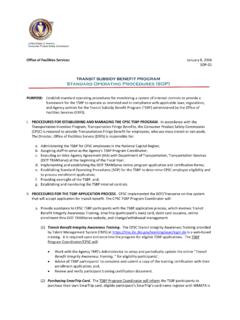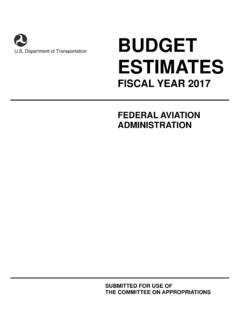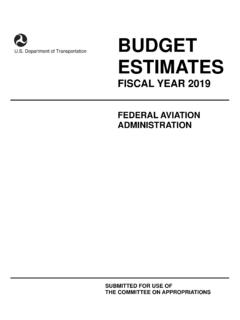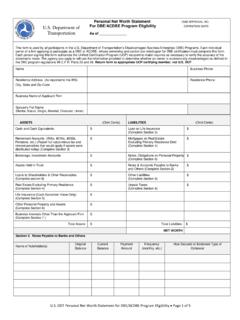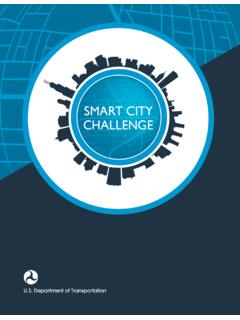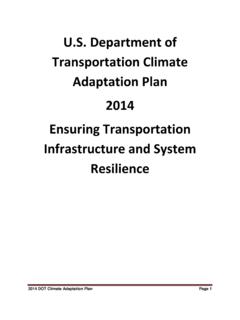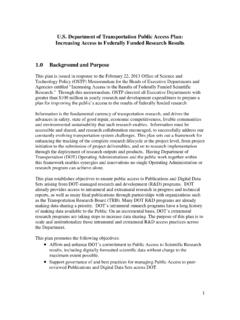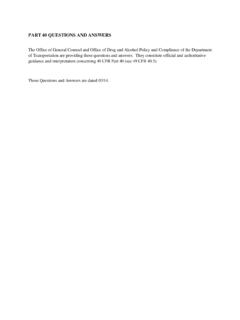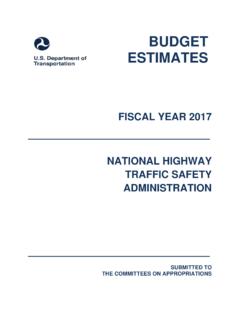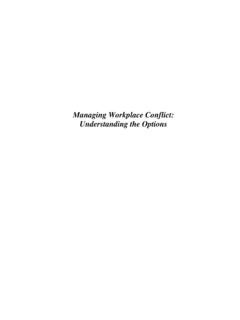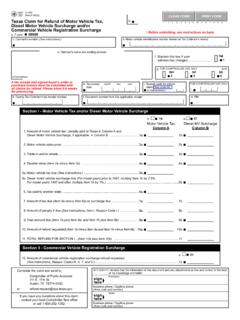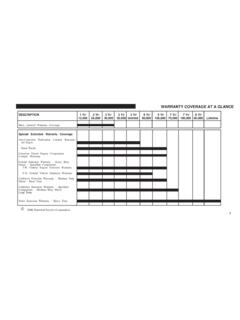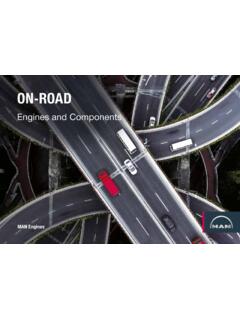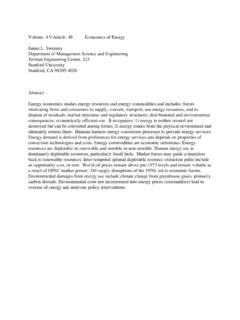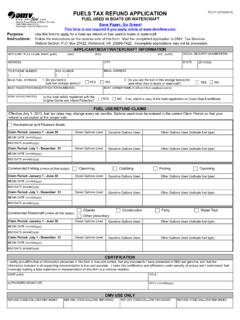Transcription of Emissions Analysis of Freight Transport Comparing Land ...
1 Emissions Analysis of Freight Transport Comparing Land-Side and Water-Side Short-Sea Routes: Development and Demonstration of a Freight Routing and Emissions Analysis Tool (FREAT). FINAL REPORT. Prepared for: The United States Department of Transportation Research and Special Programs Administration (Under DTRS56-05-BAA-0001 Full Proposal). Submitted by: James J. Corbett, , University of Delaware James J. Winebrake, Rochester Institute of Technology Jill Hatcher Rochester Institute of Technology Alex E. Farrell, University of California Berkeley DOT Network Report -- Final Table of Contents List of Tables.
2 2. List if 2. 1 Summary 3. Contact 3. Objective and Summary of Work .. 3. List of Participant Organizations .. 3. 2 Project 4. Background .. 4. Emissions Analysis and Network Optimization .. 5. 3 Methodology .. 11. Overview .. 11. Route Data .. 12. Data Relevant to Travel Time .. 15. Data Relevant to Travel 18. Data Relevant to Emissions .. 20. Freight 22. 4 The Model: Using Solver .. 22. Overview .. 22. Elements of the Solver 22. Calculating Travel Time .. 24. Calculating Travel 26. Calculating Pollutant 27. Formulae in Optimization 27.
3 Defining the Constraints in a Network Flow 27. Solver 30. 5 Model Demonstration and Modified Cases .. 30. Comparison of the Top Three Optimal Solutions for Each Objective .. 30. Modified Case Study A: Imposing Drayage Cost Penalties on Same-Mode Route 32. Modified Case Study B: Seeking Alternate, Less Congested Routes .. 32. 6 Discussion of the Model's Capabilities and Limitations .. 36. Capabilities .. 36. Limitations .. 36. 7 Conclusion .. 37. 8 40. 9 Appendix: Full list of route segments for project case 43. 1. DOT Network Report -- Final List of Tables Table 1.
4 Description of the Model Inputs and 9. Table 2. Node Reference List .. 12. Table 3. Selected Part of Master Route List and Distances .. 13. Table 4. State- and Port-Specific Speed Limits (mph) .. 15. Table 5. Percentage of Maximum Speed 16. Table 6. Drayage Time .. 16. Table 7. Defining the Congestion Index for Each 17. Table 8. Defining the Congestion Index for Each Route Segment .. 18. Table 9. Rate-per-Mile ($/mile) .. 18. Table 10. Drayage 19. Table 11. Emission Factors and other Designates .. 21. Table 12. Summary of Emission Factors (g/TEU-mi).
5 21. Table 13. Quantity of TEU Containers .. 22. Table 14. Components of the Solver Worksheet and their 23. Table 15. Network Flow Constraints .. 28. Table 16. Mathematical Representation of Net Flow Constraints .. 28. Table 17. Example Trip Layout .. 28. Table 18. Example Optimization Results .. 30. Table 19. The Original Cost Optimal Solution .. 34. Table 20. The Original Cost Optimal Solution: Route 34. Table 21. Drayage Cost Altered Case: The New Optimal 34. Table 22. Drayage Cost Altered Case: Route Selection.
6 34. Table 23. Congestion Index (CI) Selections for Case Study 2 .. 35. Table 24. Optimization Results for Case Study 2 .. 35. Table 25. Resulting Trip Layout for Case Study 2 .. 36. List if Figures Figure 1. a) Modal share in 1997; and b) change since 1980 in domestic ton-miles carried by 4. Figure 2. Emissions from Freight 6. Figure 3. Emissions trends from multimodal Freight modes as a percent of total mobile source Emissions a) combined truck, marine, and rail; b) for heavy-duty diesel trucks; and c) for marine vessels.
7 7. Figure 4. Schematic of the FREAT Model .. 8. Figure 5. Freight Network Nodes and Routes from A to B (Solid onroad trucking, dashed . rail).. 10. Figure 6. Exploring Tradeoffs for Different Objectives .. 11. Figure 7. Example Solver Parameters Dialog Box .. 29. Figure 8. Comparison of the 2nd and 3rd Optimal Solutions to the Optimal within Each Measured Output .. 31. Figure 9. Comparison of 1st, 2nd and 3rd Optimal Solutions to Single-constraint Solutions across Other Measures .. 33. Figure 10. Constraints Used in Case Study 2.
8 35. Figure 11. Time and CO2 Tradeoffs Among Optimal Solutions .. 38. Figure 12. Mode share comparison for various solutions according to distance traveled and CO2. 39. 2. DOT Network Report -- Final Emissions Analysis of Freight Transport Comparing Land-Side and Water- Side Short-Sea Routes: a Freight Routing and Emissions Analysis Tool (FREAT). (DRAFT) FINAL REPORT. 1 Summary Information Contact Information University of Delaware Rochester Institute of Technology Point of Contact: Dr. James J. Corbett Dr. James J.
9 Winebrake Mailing Address: Mailing Address: Graduate College of Marine Studies STS/Public Policy Department 305 Robinson Hall 92 Lomb Memorial Dr. University of Delaware Rochester Institute of Technology Newark, DE 19716 Rochester, NY 14623. Telephone Number: 302-831-0768 Telephone Number: 585-475-4648. Fax Number: 302-831-6838 Fax Number: 585-475-2510. Email Address: Email Address: Objective and Summary of Work This study develops the Freight Routing and Emissions Analysis Tool (FREAT), a spreadsheet-based decision tool that can assist in evaluating the economic, environmental, and congestion issues associated with alternative land-side and water-side Freight Transport routes.
10 FREAT develops the methodology and tools for: (1) quantifying Emissions from multimodal land-side and water-side Freight Transport alternatives; (2) evaluating tradeoffs among pollutant Emissions , costs, and travel time for moving Freight between two points; and, (3) identifying preferred modal combinations within a network of travel paths that would lead to either minimum Emissions , minimum costs, or minimum travel time. The decision tool applies an optimization solver to compare routes for various decision objectives ( , minimize Emissions , minimize costs, or minimize time) and constraints.
